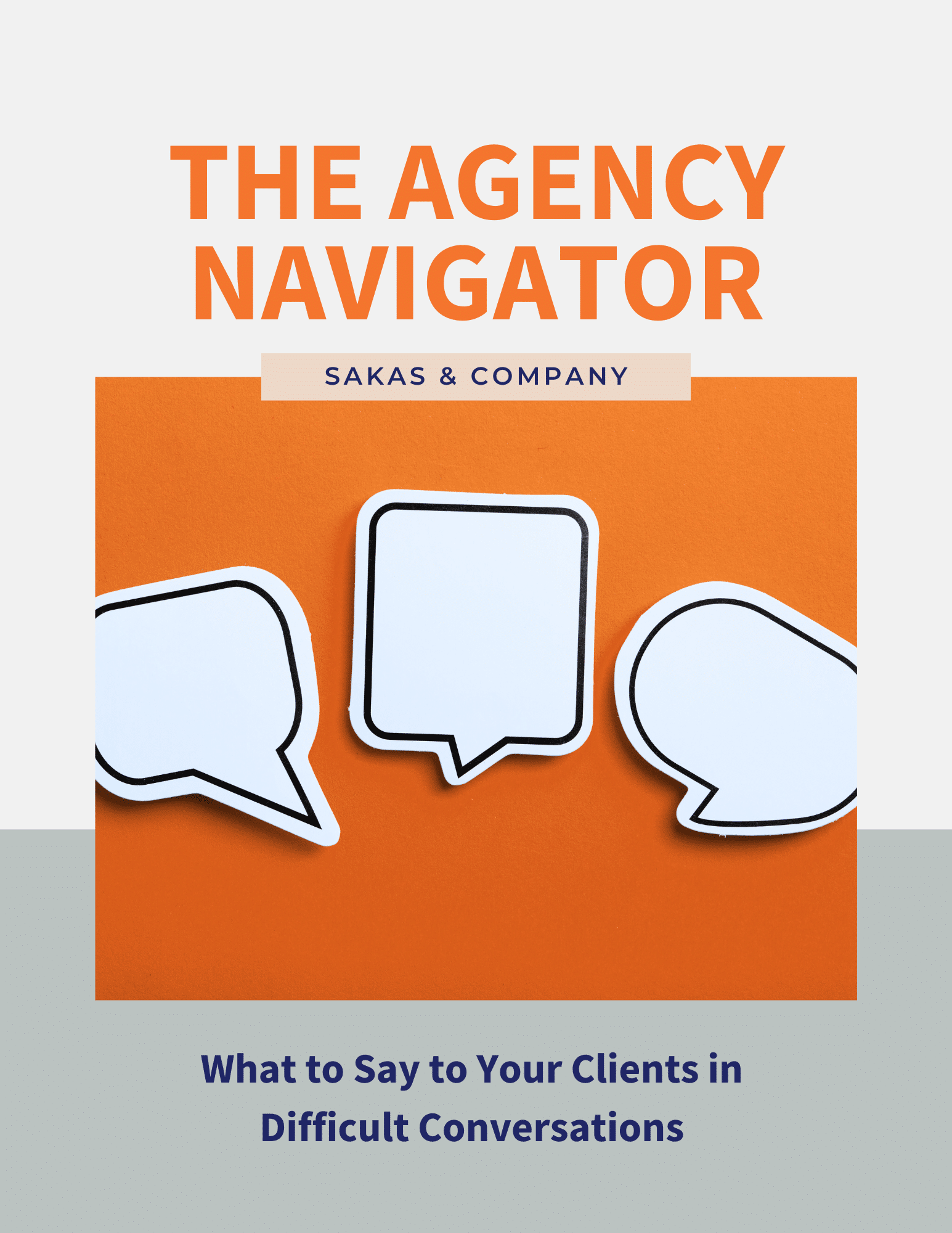Having great freelancers on-call can make a huge difference for your agency—they’re there when you need them, and not there (and not billing you) when you don’t need them.
The question is, how do you find great freelancers?
I’ve hired freelancers at agencies and at Sakas & Company, and I advise my clients on recruiting freelancers at their agencies. From that experience, I’ve identified these five freelancer recruiting steps to make your life easier:
- Define the role and your budget.
- Ask your network for suggestions.
- If needed, find additional candidates online.
- Vet the freelancer candidates to see who’s a match.
- Get them under contract and move forward.
Ideally, you want to do all of this before you need someone urgently. I recommend building a “stable” of freelancers—for most agencies, that’s ~3-5 people in each role (e.g., copywriter, developer, SEO analyst, PPC analyst, digital strategist, etc.).
The idea is that when you need help, at least one of the people will be available. Don’t have too many people on-call, since if you hire people once a year or two, they’re not invested in your success—since you’re not invested in theirs.
Let’s take a closer look at each of the steps to finding a great freelancer for your agency.
1) Define the role and your budget
If not an explicit job description, then at least identify the skills and qualities you need. Why? This makes it easier to find the right person.
For instance, you know you need a designer—but do you need a production designer or a conceptual designer?
Or perhaps you know you need hire a project manager, or a social media specialist—but what prior track record do you need? Are they interacting with clients, or working entirely behind the scenes?
Budget is important—knowing your budget helps drive the level of quality and experience you can hire. Frequently, you get what you pay for.
If your budget is minimal, you may need to look overseas at freelancers based in countries that have a low cost of living—where their hourly or project rate is cheap for you but a good deal for them.
2) Ask your network for suggestions
I find the best freelancers tend to come via personal referrals.
Why? Because someone you trust has recommended them, and the freelancer has an extra incentive to do a good job—they don’t want to look bad to the mutual acquaintance who recommended them.
Referrals are more likely to return your email, especially when they’re an in-demand role like web developer or mobile app developer. It’s better to hear a fast, “Sorry, I’m booked for three months” than no response at all.
TIP: Create a landing page with info on the freelance position. This makes it easier for people to share on social media and via email—harder to do when the job info exists only in an email, a LinkedIn message, or a Word doc. Do this for all your job postings—shareable (and search-indexable) landing pages are your friend.
3) Find additional candidates online
If you can’t find the freelancers you need via personal referrals, you’ll need to look online. You have three options for that—freelancer directories, LinkedIn, and general search.
Freelancer directories
Freelancer directories can be a good match if you’re seeking someone in a particular budget range and have no referred-in leads. Most feature a ratings system and some even let you monitor the freelancer’s computer screen while they’re doing billable work for you.
Some options include, in alphabetical order:
- Clarity (focuses on by-the-minute phone-based help, but you can pitch good matches on doing longer-term work)
- Craigslist (not a directory, but a good way to find raw freelancer leads, especially if you need someone local to you… no ratings, though)
- Fiverr (marketplace focuses on fast-turnaround, defined-scope projects)
- FlexJobs (prepare for your agency to vetted as a prospective hiring firm)
- FreeUp (pre-vetted candidates in 85+ skill categories)
- Hubstaff Talent (directory of freelancers and small agencies… and they don’t take a cut!)
- Maven (a consultant matching service)
- Upwork (big marketplace—formerly Elance-oDesk)
Freelancers on LinkedIn
Do an advanced search for keywords you’re targeting. You can focus on your geographic area, or anyone within a certain distance.
Most freelancers mention their areas of specialty, which helps to decide whether to reach out. You can also do an initial search to include first-and second-level contacts, for people you either know (and perhaps didn’t realize were freelancing) and people you can get intros to.
If you don’t have a premium LinkedIn membership to send an InMail message, consider that most freelancers list a contact email address and/or their freelancing website.
If a freelancer doesn’t have a website, this typically means they’re not focusing actively on their freelance work. This can be good (it’s non-critical revenue, so they tend to charge below-market) or bad (their day job takes priority, and you’re chasing them down after-hours).
Searching via Google
Active freelancers tend to have websites showing a portfolio, client testimonials, and other info to help you decide if they’re a match. As a result, you can find them via search.
Having a so-so website may not be a dealbreaker. Some of the best freelancers I know have mediocre websites because they’re doing so much client work.
When you’re using Google to find freelancers, consider keywords involving your industry focus. If you’re looking for people anywhere, you might as well find people who can hit the ground running.
4) Vet the candidates to see who’s a match
Finding a freelancer is easier. Ensuring you’ve found a great freelancer is harder, especially if they haven’t come via referral.
The key is to have a vetting process—you’ll want to customize the process to your agency.
As a baseline, do an interview. How in-depth? It depends on how much you’re depending on them to get things done. Be more careful if they’ll have client contact. And you probably should check references, too, especially if you’re going to put them on a client-billable project immediately.
Be sure to manage their expectations about timeline—are you hiring for a specific, upcoming project, or are you building your stable of freelancers for future, TBD work?
Have them do a small, paid, test-run assignment
Before putting them on billable or otherwise time-sensitive work, I recommend doing a trial run. That is, have them do a small, paid, non-critical project to see how they do.
I recommend having a set of standard assignments, one for each role—maybe it’s creating CSS from a portion of a PSD, or doing keyword research for a PPC account, or creating a project plan from a sales proposal.
Doing a “standard” assignment makes it easier to compare several candidates at once or over time. You’ll see who does well and who does poorly. You can observe turnaround time, followups questions, and quality.
As I noted above, you want to build your “stable” of freelancers before you need them. The cost of test-run assignments is minor compared to putting someone on a client project and realizing you’ve made a horrible choice.
5) Get the freelancer under contract and move forward
Ready to move forward? Get them under contract. Don’t have a freelancer (or contractor) contract yet? Get one before you need it.
The contract will note their rate but won’t guarantee a specific workload. Be sure to include a non-disclosure agreement (NDA) and ideally a non-solicitation (non-poaching) agreement. Talk to your lawyer for specific advice.
As I note above, be sure to manage their expectations about your needs. Don’t rush someone to get on board, only to say, “We’ll call you when you need you.” If you do that, you’ll find people don’t want to work with your agency.
Summary for your agency
Remember to structure the process, decide what you can afford, seek referrals first, and vet your hires on non-critical work before you throw them onto a client project.
And plan ahead. Follow this freelancer-hiring advice now and you’ll feel better when you land a new contract or get a big upsell—because you’ll already have people who can do the work!
Question: How did you find your agency’s best freelancers?


